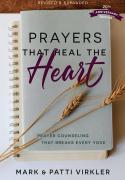I arrived in Kalonga three weeks ago for a three-day pastors’ conference. About 150 men and women gathered from near and far for many hours of teaching and training. By the end of our time together, most of these leaders were really understanding about multiplying ministry by releasing others into their gifts and callings. This is a titanic shift in what they have been previously taught about how to be a leader. They left the conference with a much bigger picture of the Gospel. They also embraced the truth that, according to Mt. 28:18-20 and 2 Tim 2:2, if you want to be a disciple, then you must make disciples, who make disciples. Most of these men and women returned home determined to do exactly that.
On Sunday evening, the team arrived in Mubende, the small city near Kalonga where we are staying. Monday was spent in orientation––primarily teaching some of our foundational values and practices; Biblical themes; preparing them for work in the medical clinics; and sorting meds, clothing, toys and school supplies. On Tuesday, we took the team to my beloved Kalonga. This is the town where Impact Nations has worked over the past three years to bring about community transformation. As in the past, this trip was full of delight for me. We first went to our initial widows’ community––twelve plots of fertile land where 12 families have homes, gardens, banana trees, chickens, pigs and goats. As always, we were surrounded by throngs of happy women and their children (and grandchildren) who excitedly and proudly showed us the latest improvements. We saw flower gardens, vegetables of all sorts, cooking and storage sheds, and several home improvements. We were aware of just how much production was happening from this land. Everywhere I looked there was new, vital growth. When I consider the hopelessness that marked these women’s lives only two short years ago, I am greatly moved with gratitude to the Lord, and a deep respect for what each of these families have accomplished.
The school children invited the team to a presentation of singing, dance and drama. They incorporated a number of elements of the transformed community into the drama, including sewing machines, water filters, crops, and even laptop computers. Various groups and classes performed a number of dances. Then Pastor John spoke about how Kalonga has changed, and continues to change. Following this, they showed the team the sewing school (now re-located to a larger facility) and the computer lab for the students; in the evenings, it becomes a community internet café. (Ironically, Kalonga has wifi, but no electricity!) Many of the team then took the bus to see the farmland.

The farm is currently 20 acres, but is about to add five more acres to accommodate the growing cattle population. As always, I found the farm to be a beautiful, peaceful place. It is about 15 minutes from the town, surrounded by green hills. We began with five cows; now there are 19, with three more calves on the way. There are currently 34 pigs; every couple of months, more are sold at the market. The cows and pigs are providing a steady and growing source of income. We walked about 600 meters down the hill to the pond and the pump house. From there, water is pumped up to the top of the hill to a water tank for the cows and pigs. As well, we now have an irrigation sprinkler system for the various crops. Recently, they gathered in a large bean harvest––enough to feed the orphans and the teachers, with lots left over to sell at market. Now, because of the sprinkler system, for the first time ever, they were preparing to plant a new crop of beans over several acres without having to wait until May for the next rainy season. Besides the beans, there are many kinds of vegetables, pineapples, cassava, corn, and over 450 banana trees. We were only going to visit the farm for about half an hour, but it took 90 minutes to see all that they are doing there.
All day, wherever we looked, we saw a people who are making the most of every opportunity offered to them. Their hard work and thankfulness are an inspiring example.












Add new comment